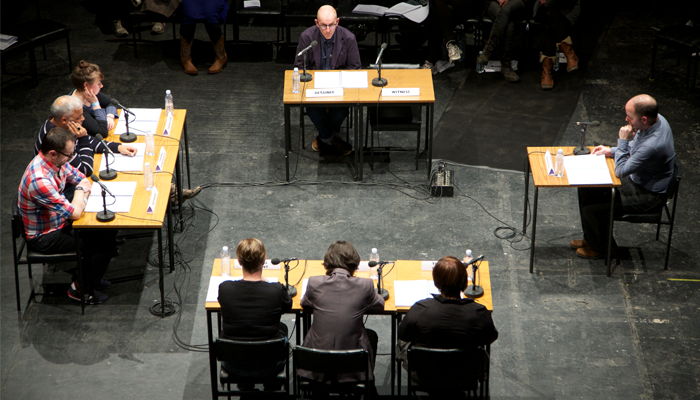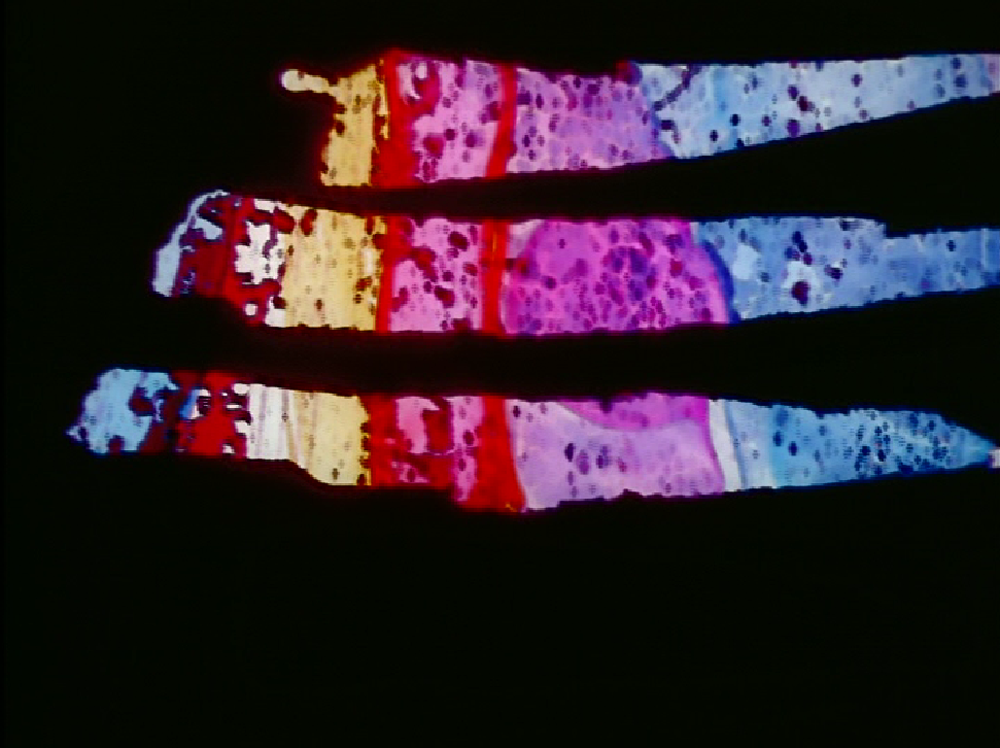Film Programme 3: Retro
Film Programme 3: Retro
Birthed from the collective stagger in global consciousness of the late 50’s and 60’s, this programme celebrates epochal, groundbreaking films that all address sound in their own way and that have opened pathways to experimentation that are still today being worked through, developed and discovered. Expect a touch of playfulness, joy and frivolity.
Scotch Hop, Dir. Christopher Maclaine, USA, 1959, 6 mins, 16mm
In acknowledgement of his Scottish heritage, Maclaine photographed this cine-poem to document an authentic highland gathering in the town of Petaluma, California. The pastimes include speed walking, tossing the caber, traditional dances, bagpipe and drum troops. Using unlikely camera angles and tight, rhythmic cutting, Maclaine performs an impromptu dance with the camera, cut to the tuneful droning of the pipes and drums. You can take the Maclaines out of Scotland, but you can’t take Scotland from the Maclaines. (Mark Webber)
Maclaine did not accomplish the exquisite sense of Scotch Hop by sitting down and figuring dry tables of numbers and rhythms or studying the formalities of composition and rhythm… Chris Maclaine was able to accomplish what he did with this film because he loved what he was filming… He had a camera with him and he had worked with it for years, and he knew how to operate it so that it did not interfere with him. He danced with it. (Stan Brakhage)
Moods in Motion, Dir. Ettilie Wallace, USA, 1954, 5 mins, 16mm
In 1954, while working for the Kinesis distribution organization in San Francisco, Chistopher Maclaine was introduced to a San Diego newspaperwoman, Ettilie Wallace, who had produced an abstract motion picture utilizing images created by her “kaleidolight” box, an affair composed of coloured lights and revolving plastic forms. Miss Wallace was looking for a composer to add a music track to her film, and Maclaine offered his services, composing a score for drum, flute, and human voice. The completed film was entitled Moods in Motion. (Robert Pike)
Come Closer, Dir. Hy Hirsh, USA, 1953, 5 mins, 16mm
The late Hy Hirsch was a visual artist of the stature of Len Lye or Norman McLaren, and no less entertaining. Since he lacked the publicity or a large organisation his films are correspondingly unknown, but have long been fascinating to connoisseurs of the ‘pure’ visual film – and delighting unsuspecting members of the ordinary public who had the rare treat of stumbling onto his movies.
This early film of Hirsh’s is an irresistable invitation to relax and enjoy oneself. Circles and rings fade up and away, waveforms arc, spheres revolve, against sumptuously coloured background. Enhanced by easy going dance rhythms to complete the mood of relaxed gaiety.
(Lux)
Peyote Queen, Dir. Storm De Hirsch, USA, 1965, 9 mins, 16mm
A further exploration into the colour of ritual, the colour of thought; a journey through the underworld of sensory derangement.
A very beautiful work! The abstractions drawn directly on film are like the paintings of Miró moving at full speed to the rhythm of an African beat. (D. Noguez)
Among my favorites … beauty and excitement. (Jonas Mekas)
Corridor, Dir. Standish Lawder, USA, 1968-70, 22 mins 30 secs, 16mm
A long narrow corridor that has overhead lights spaced evenly along the ceiling and a short flight of steps at the end leading to an utterly black doorway form the basis of this film. Sometimes a nude figure appears, drifting spectral-like along the corridor. The subject, insofar as it can be pinned down at all, is film itself. The camera zooms and tracks continuously along the corridor but the images are extensively reworked and transformed in the optical printer. Different film stocks create grain patterns ranging from full tone through to high contrast black and white.
Multi-exposures, super-impositions, of positive and negative, strobing and many other image distorting techniques are used to create what Standish Lawder calls “an occasion for medative speculation”. The images pulsate and vibrate as though the corridor has come to life and is breathing – only as a corridor could. Matching this is the marvellous hypnotic music of Terry Riley. (Lux)
Corridor took two years to make. It is my best film. (Standish Lawder)
Corridor is a marvellous meld of music and cinematic tension that maintains a visual excitement throughout with its constant exploration of horizontal and rectilinear patterns, chiaroscuros and deep grains, pulsating double and negative exposures, and constant tracking shots of a nude figure standing at the end of a long, close corridor. (James Childs)
Melting, Dir. Thom Andersen, USA, 1964-65, 6 mins, 16mm
A single, static 200-ft. shot, filmed at 3 frames per second. MELTING shows the natural monostructural disintegration of a strawberry sundae, its passage from rigidity to softness, from edibility to waste. The spoon resting on the plate refers to the human presence, which lurks behind the screen, declining to interfere with what transpires. (Filmmakers’ Co-op)
Be-In: 1967, Dir. Jerry Abrams, USA, 1967, 7 mins, 16mm
Music: Blue Cheer
Captures the spirit and essence of the great San Francisco Human Be-In of January 14, 1967. Ten thousand people imbued with peace, love and euphoria. Set to hard rock such as only San Francisco blues can produce. BE-IN contains Allen Ginsberg, Lawrence Ferlinghetti, Timothy Leary, Michael McClure, Lenore Kandel and Buddha.
Offon Re-Released, Dir. Scott Bartlett, USA, 1968, 9 mins, 16mm
An acknowledged classic in experimental film, OFFON is a dynamic abstract display of virtuoso film and video techniques used directly and poetically to evoke a visceral awareness of fundamental realities below the surface of normal perception.
The language of OFFON is evocation. We gaze at these iconic forms hypnotically, much the same as we are drawn to fire or water, because they make us aware of fundamental realities below the surface of normal perception. (Gene Youngblood)
… a perfect, magical fusion of non-verbal communication and advanced technological filmmaking… Indeterminacy, the union of opposites, the cosmic, the expansion of consciousness, the going beyond rationalism; all these are intimated purely visually, almost subliminally, to those willing to see. (Amos Vogel)
Below are some online links which you can use for reference. To see the films in their original glory, check with the distributors of the films for their terms and conditions.
Documentation
Artists

